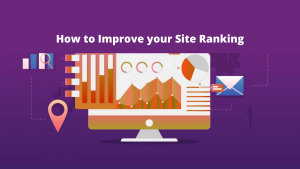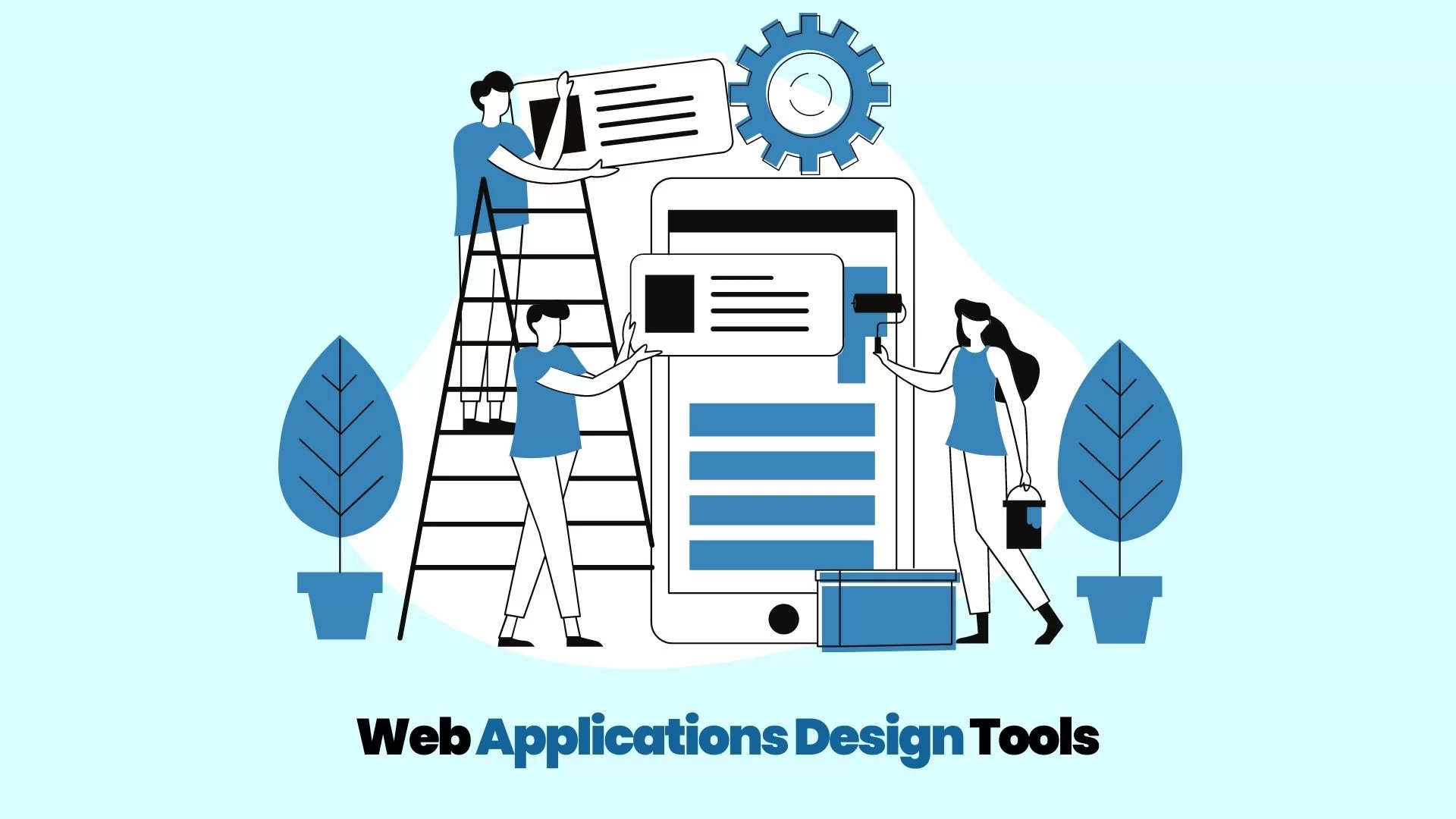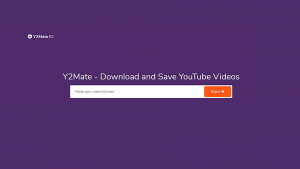The Art & Science of Web Design can help webmasters understand the web from the inside. It is structured around Core Web Vitals and other concepts that often get only a passing mention in books on website design. This book is not a reference book or a style guide. It is your mentor, whispering all the answers to those ubiquitous questions in your ear and reminding us of a few things.
For instance, a reminder that there are new rules and new ways to break them. Regarding web design, style guides are often too dull and predictable to capture the attention of caffeine-riddled developers. Luckily, The Art & Science of Web Design helps simplify things for webmasters (experts and beginners). These fundamentals can help strategically equip webmasters to design websites effectively.
Our Web Tech Experts team and Ascendly Marketing are some localized digital online companies to consult. They specialize in custom websites for all-round businesses. In particular, they help design and develop websites optimized for all devices built from the ground up with your business goals in mind. At the same time, this helps drive brand awareness, increase conversions, and grow revenue.
Be that as it may, this article will introduce website design, art, and science fundamentals in the digital age. Equally important, we’ll emphasize how a well-designed website can significantly impact user experience, optimize digital brand perception, and help drive online business success. We’ll also discuss the importance of designing your website with the end user in mind for optimal results.
Understanding What The Art & Science Of Website Design Entails For Beginners
To enumerate, it’s worth mentioning that The Art & Science of Web Design is a journey laden with a historical background of standard elements, technology features, and innovative trends. Yet the topics are timeless and core to sound website-based engineering, so it’s space well spent. Eventually, the new mix of expert opinion and historical explanation creates a well-rounded reader experience.
Issues such as interface consistency are explored within the unique paradigm of website design & development landscape. For instance, while focusing on the assistance of a sidebar to explain what “above the fold” means. Performance is discussed with an unusual twist: the current constraint on web-browsing performance is good since it fosters creativity and elegant website designs.
Beyond the usual design tips, this makes The Art & Science Of Website Design a unique reference for beginner webmasters. Art & Science stays at a reasonably high altitude, dwelling not on the fine details of browser compatibility but on the key areas designers must be concerned about. With years of experience and knowledge of the legacy of traditional publishing, there’s a lot to learn.
In our case, we provide a great perspective on the dicey work of website designers and developers in creative layout delivery (for beginners and professionals). Regarding the basic techniques, successful websites and applications encompass various design fundamentals and development principles in their work plans. These elements help foster effective results per the business needs.
The Vital Website Design Elements:
- Technology History (Publishing, Presentation Model)
- User Interface Website Layout Consistency
- Website Layout And Mainframe Structure
- Reader Interactivity And Self-Aware Content
- Web-Based Browsers (Chrome, Edge, Firefox)
- Overall Site-Wide Performance (Speed, Interaction)
- Digital Marketing And Online Advertising Channels
- Creative And Database-Driven Website Content
In other words, understanding The Art & Science Of Website Design helps us understand the mastery from the inside. Usually, it is structured around core website concepts often mentioned in design and development guides. Likewise, it’s your mentor, whispering all the answers to those ubiquitous questions in your ear and reminding us that there are new rules and innovative ways to break them.
How The Internet Evolved Into An Innovative Website Design Technology
For your information, it’s worth noting that, working with fellow researcher Mike Sendall, Berners-Lee created a server for storing and distributing information and a client application for browsing. They called this system “World Wide Web,” set it up on a NeXT server, and began spreading the software. Popularity grew as clients, or “browsers,” were developed for other computer systems.
The Web may be growing fast, but its foundation stretches back through years and decades of electronic publishing history. In this case, we can look back at how the intersection of traditional publishing and early databases influenced how the Web or Internet was built. Why does that matter so much? The notable reason is that we need to deconstruct the basic philosophy of web design.
For instance, we can focus on how the integration of structure, style, and behavior form the basis of our thinking about development on the Web today. Then, from the theoretical to the concrete, we can look at how that underlying theory applies to the crucial elements that make up the Web, the design teams’ collaboration, target user interconnection, and the technologies they use.
Through that lens, we can look at today’s Web interfaces. Fast forward to 1989. In this case, a researcher named Tim Berners-Lee, working at the European Particle Physics Laboratory, proposed a simple hypertext system. Next, hoping to connect the distributed work of physics researchers, Berners-Lee developed a prototype system for linking information, including three critical pieces.
They are as follows:
- The method of giving everything a uniform address,
- A protocol for transmitting these linked bits of information,
- And a language for encoding the information.
By 1994, the Web had surpassed all other forms of Internet traffic, and new browsers like Mosaic and Netscape’s Navigator had entered the public consciousness — the Web was alive. Part of the incredible growth of the Web space is its simplicity—especially the ease of creating documents for reading in browsers. Berners-Lee knew that a basic document format would be required.
In particular, the aim was to help pass information between computer systems. His first effort, the HyperText Markup Language, or HTML, closely followed the basics of SGML but with a few differences. New versions would be embellishments of old versions. On that note, it’s clear that he knew for his proposal to succeed, it had to embody various essential principles and characteristics.
Including:
- Simplicity: Keenly aware of the incredible complexity inherent in SGML, Berners-Lee opted for a tiny subset of tags for describing a document and didn’t bother with a method for defining a document’s styles.
- Universality: He imagined dozens or even hundreds of hypertext formats in the future and intelligent clients that could quickly negotiate and translate documents from servers across the Net. While this vision may not have become a reality, the fact remains today that HTML and its derivatives can be read on virtually any computer and many devices like phones and hand-held units.
- Degradability: While maintaining a simple system, as well as one that worked across the diversity of the Internet, Berners-Lee realized that HTML would eventually have to expand. He added a final axiom regarding new versions to accommodate managed growth: they must never break older language releases. So, as the nascent Web evolved, it would never require upgrades.
Thus, the first version of HTML was created with a few essential elements: <H1> through <H6> denoting headlines and subheads, <P> for paragraphs, <LI> for lists, etc. Since there was no associated presentation information, any browser—running on any computer system—could interpret this primary collection of tags and display them most appropriately.
High-end workstations could present typographically rich documents on color monitors, while simple terminal emulators could offer a stripped-down version that matched the limited capacity of the device. Suddenly, everyone could exchange electronic document files in a straightforward, albeit constrained, way. And suddenly, they did.
As publishing moved to computers, those codes were added electronically to text to describe how a computer would format. Eventually, SGML was created as a standard way of encoding this information, but it was too complicated for everyday usage. Today’s World Wide Web uses a small and straightforward application of SGML—the Hypertext Markup Language (or HTML).
Why Understanding The Design And Development Principles Is Essential
Markedly, we use endless systems and software to reach them, and we rely on limitless business models to finance it all. The solutions to many Web problems are ultimately grounded in sound design. What makes a good Web site? Where did the Web come from? Why does the technology work the way it does? Am I even using it correctly? It’s essential to get answers to these questions.
The skills it takes to be successful on the website reach far beyond knowing the code. Realistically, most of us who build websites or applications for a living have the essential technologies wired to our brainstem. However, designers who fundamentally understand the website layout and application structure at its core are rare. Yes, there are plenty of resources available to teach us everything.
Of course, we can learn about different programming languages and utilize various design principles such as HTML, Cascading Stylesheets (CSS), JavaScript, and even User-Centered Design in our projects. However, lacking is a guide to fully fathom why the technologies work their way and how to exploit that knowledge to build successful business websites and branded applications.
We can point out a dozen reasons why a website fails—not only as an example of intelligent design but also how it fails to meet the target audience’s and potential customers’ basic needs. As webmasters, it’s time we build a website that pushes the company brand into a new medium rather than dragging the baggage of the old with us. A myriad of questions might run back into our heads.
Consider the following:
- How does our Web team work together—we’ve got marketers writing content, designers laying out pages, and engineers wiring all of it together. Is this the right way to be structured?
- As a beginner webmaster, must I know HTML or CSS to be a qualified designer? Can’t I get by with an excellent Authoring Tool and optimize my skills with time?
- How do I incorporate digital online marketing and utilize web advertising networks effectively on my website? Will we ever make a dime on all of this website-based investment?
- Everyone is talking about “personalization” and “one-to-one” marketing. So, precisely what does that mean to you when sketching out a new website project?
- Our website looks great until the CEO gets a WebTV for Christmas. Now, our vacation is cut short while we rethink our entire design strategy. What went wrong?
- There are so many new web development trends vying for our attention. How can we ensure we don’t commit our website to one or get stuck designing 3D flythroughs of the corporate campus?
- We hired a creative website designer and application developer, but he works in Photoshop all day and makes us build the pages. We’re pretty sure he doesn’t even understand HTML. That’s not a good design.
Oh, we get it! You don’t write programs with any centric mindset; you use them! Most people would want to use a computer to get stuff done. Computers were tools—mighty ones, at that. So here we are, a decade later, facing an explodingly popular World Wide Web (WWW) landscape. It’s disconnection and empowerment all over again. From the initial pit in our stomach, there’s so much here!
The Web grabs us and draws us in —it’s everywhere now. It has infused itself into our mainstream culture. Autonomously, website URLs are becoming as ubiquitous as toll-free 800 numbers—showing up on billboards, matchbooks, and television sitcoms. In other words, the Web is now a new hobby—a big business—a medium for personal expression, and a conduit for a commerce revolution.
The Topmost Essential Website Design Elements For Aspiring Webmasters
There is always a good reason why incorporating local culture in a strategic website design plan matters. For example, the Website Designer In Dallas often encourages beginner webmasters to integrate elements of the local culture into their designs. In most cases, this could include using imagery, color schemes, or symbols that are culturally significant to the localized community.
One significance of effective website design is that it helps empower brand identity, foster reputation awareness, and increase business recognition. Aspiring website designers should be able to explain how a well-designed website contributes to brand identity and recognition. In addition, they must clearly and cleverly discuss the role of consistent branding elements across the website.
The other essential goal is conversion optimization. In this case, beginner webmasters must technically highlight the connection between design and conversion rates. At the same time, they must be able to discuss strategies for optimizing integrative elements such as Call To Action (CTA) buttons, customer fill-in forms, and other functionalities that can help improve conversion rates.
In layman’s language, creative website design should be a continuous learning exercise and professional development process. On the one hand, we often encourage aspiring designers to stay updated with industry trends and continuously improve their skills. On the other hand, we recommend they consider taking online courses, enrolling in training workshops, and community engagement.
Other Considerable Elements:
- Focus On The Target Audience: During the primary User Interface (UI) Design Process, building an effective website with the end-user in mind is essential. Understanding the target audience and their needs is fundamental to creating a successful website.
- Understanding The Demographics: Highlight the importance of researching and understanding the specific demographics of the Dallas audience. Discuss how tailoring design elements to the local population can enhance user engagement and resonate more effectively.
- Visual Hierarchy And Typography: In this case, explore the principles of visual hierarchy and typography in web design. Focus on learning and gathering more information on how vital elements such as fonts, colors, and layout can guide users through the content and enhance readability.
- Responsive Web Design: Technically, focusing on a strategic Responsive Web Design (RWD) approach can prove invaluable in your projects. To help meet the demands of your customers, try to highlight the significance of responsive design in today’s multi-device landscape. Likewise, explain how designing for various screen sizes ensures a seamless user experience across devices.
- Incorporating Emerging Technologies: Explore the role of technologies like Artificial Intelligence, Virtual Reality, Machine Learning, and Augmented Reality in your website design projects. Discuss how these technologies can enhance user engagement and create unique, immersive experiences.
Next, as a beginner webmaster, staying updated on the current design trends is essential. Provide insights into the latest design trends, such as dark mode, minimalism, and micro-interactions. Discuss how staying abreast of trends keeps a website modern and engaging. Focus on building your website with the world’s most intuitive platforms, such as WordPress, Wix, Joomla, etc.
In Conclusion;
Yes, the Internet is getting better, and at the same time, it’s also getting worse. What do we mean by that? Metcalf’s Law, named after Bob Metcalf—the man who invented Ethernet—states that networks become more valuable as the number of people using them grows. As a rule of thumb, a computer with an email application is worthless unless it’s somehow connected to another.
Add two more to the connection, and as a result, it doubles in value. Add 100 million more, and suddenly, the world changes. It’s obvious how Metcalf’s Law—when applied to the web design processes—has significantly changed how we live, work, and interact with one another. As a significant percentage of the world’s population comes online, the value of the network skyrockets.
New web uses emerge simply because there are so many people around. The Web gets better as it gets bigger. What is not apparent is how the Web is straining under the load. We’re not talking about simple network architecture. However, that’s a significant concern for some. Rather, we must look at how this unbelievable popularization has amplified some fundamental flaws in web design.
It seems almost cliché these days to be nostalgic for technology from days past, but we must admit we are. This blog article has cleverly summarized and reiterated the importance of balancing creativity with functionality in website design. Be that as it may, we encourage our potential readers (professional and beginner webmasters) to apply the insights gained to elevate their website designs.
Topmost Frequently Asked Questions (FAQ) Answered:
1. What is the significance of a user-centric approach in website design?
A user-centric approach prioritizes understanding the needs and preferences of the target audience. By designing with the end-user in mind, websites can deliver a more satisfying and practical user experience, leading to increased engagement and success.
2. How does responsive design contribute to a seamless user experience?
Responsive design ensures that websites adapt and display optimally on devices like smartphones, tablets, and desktops. This adaptability enhances user experience by providing a consistent and user-friendly interface across different screen sizes.
3. Why is brand identity crucial for a well-designed website?
A well-designed website contributes significantly to brand identity and recognition. Consistent branding elements, such as logos, colors, and messaging, create a cohesive brand image. This helps establish trust, credibility, and a memorable brand presence online.
4. What are some strategies for optimizing conversion rates through design?
Conversion optimization involves improving elements like call-to-action buttons, forms, and overall user flow. By strategically placing and designing these elements, website designers can encourage visitors to take desired actions, leading to higher conversion rates.
5. How can aspiring website designers stay updated with industry trends?
By all means, it’s worth mentioning that continuous learning and professional development are essential. Aspiring designers can stay updated by participating in online courses, attending workshops, and engaging with the design community. One thing is sure: Following design blogs, forums, and social media accounts can help you stay informed about the latest trends.
6. What should be included in a strong portfolio for a website designer?
Beginners webmasters must understand that a strong portfolio should showcase various projects highlighting the designer’s skills and style. For instance, you can try to include diverse examples of website designs, explain design choices, and, if possible, feature projects that resonate with the local community to demonstrate adaptability and relevance. The results will be outstanding!
7. How can website designers incorporate local culture into their designs?
Incorporating local culture involves using elements such as imagery, color schemes, or symbols culturally significant to the locally-based and custom demographic community. Designers can research local trends and preferences to ensure their work aligns with the unique characteristics of the locally-based target market. Know the current trends to stay ahead of the competition.
8. Why is it beneficial to showcase locally-based projects in a portfolio?
Showcasing locally-based projects in a portfolio builds credibility and trust with potential clients in the local area. It demonstrates the designer’s understanding of the local market and ability to create designs that resonate with the demographic-based and target niche audience. We recommend featuring projects related explicitly to locally-based businesses or organizations in the portfolio.
9. How does building a solid business portfolio empower webmasters?
Regarding a successful website design journey, building a robust portfolio is an integral part of the process. In most cases, to help showcase your work ethic and professionalism, provide your brand style guidelines and create a solid business portfolio that showcases your ultimate design skills and style. Showcase the importance of including diverse projects and explaining design choices.
10. What are some limitations of the Hypertext Markup Language (HTML)?
In the historical tradition of authoring, editing, and designing information, the Web browser became the automated typesetter for a standard set of general document codes. However, there were some problems: HTML was only intended to encode structure, leaving the browser to interpret style, and HTML had the most limited set of structural tags. There was a need to include style rules and extend HTML to include any structural element and maintain this universal standard.









